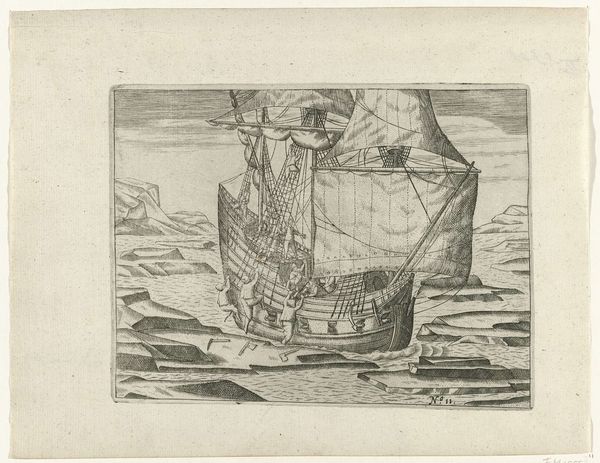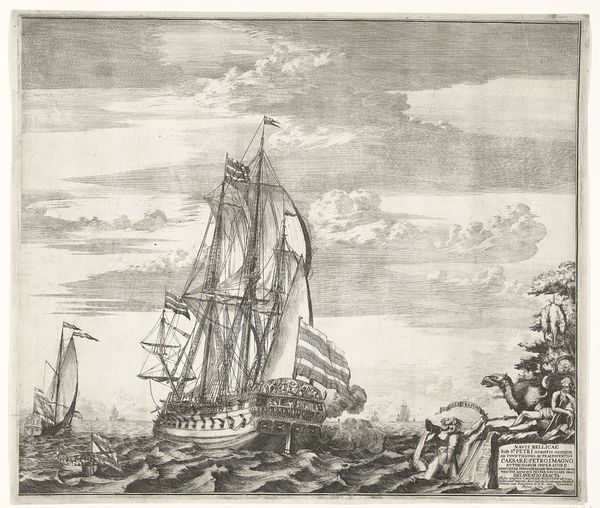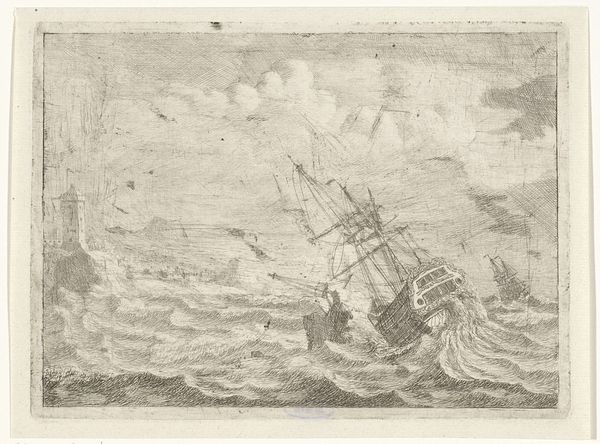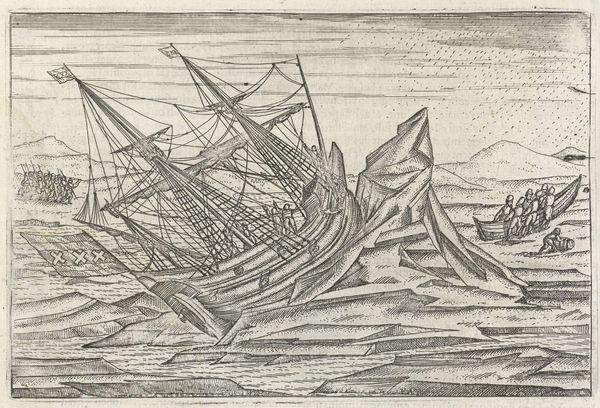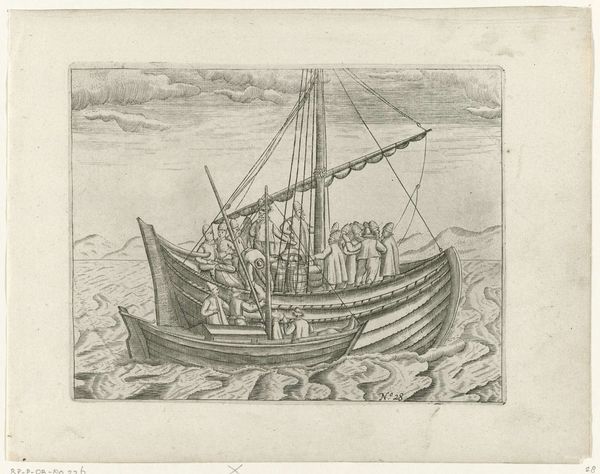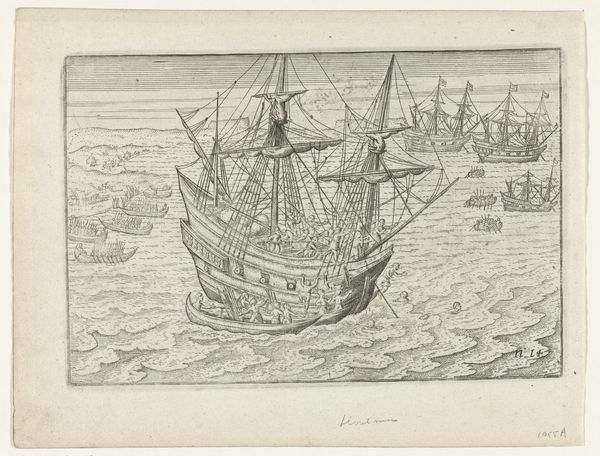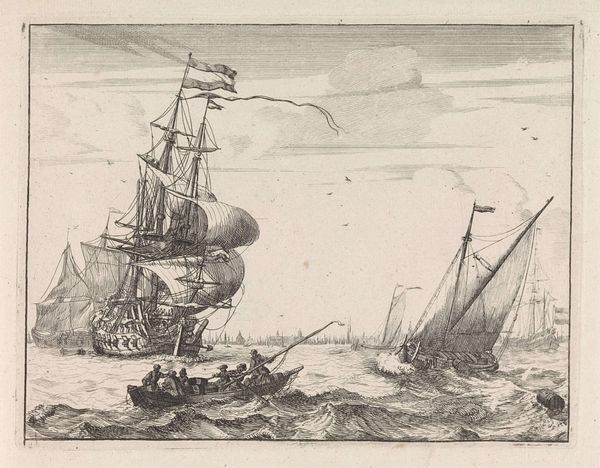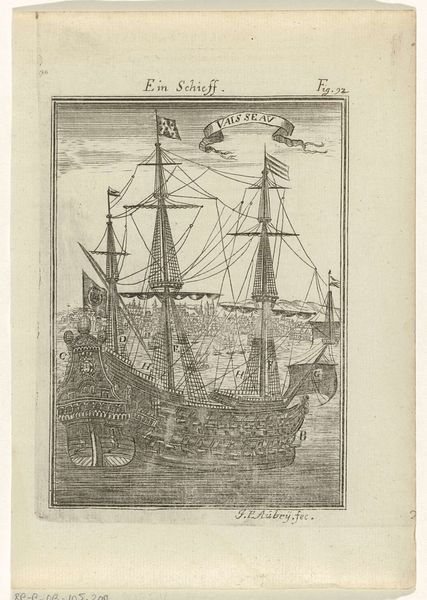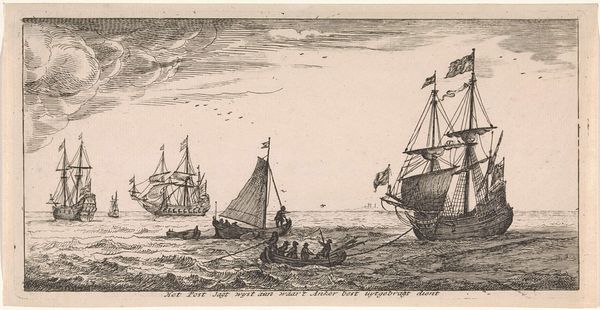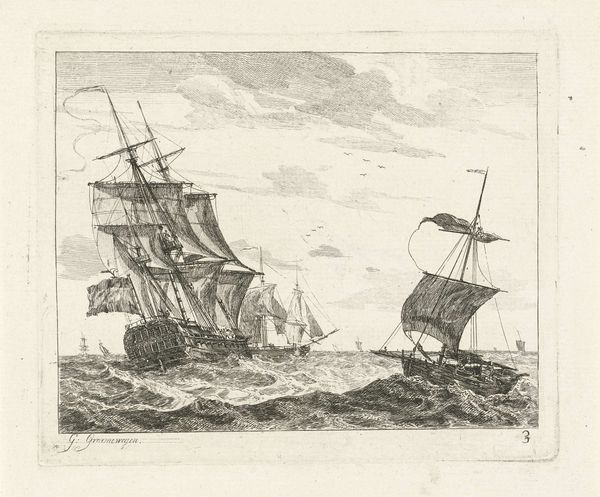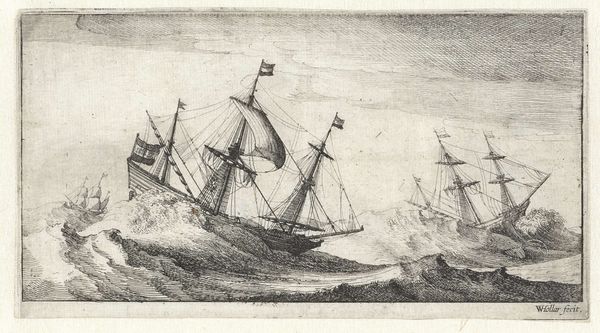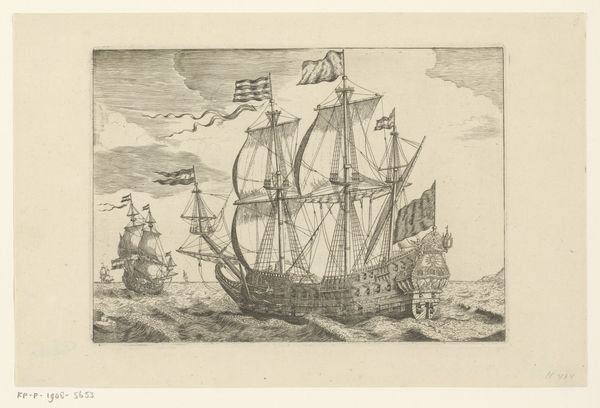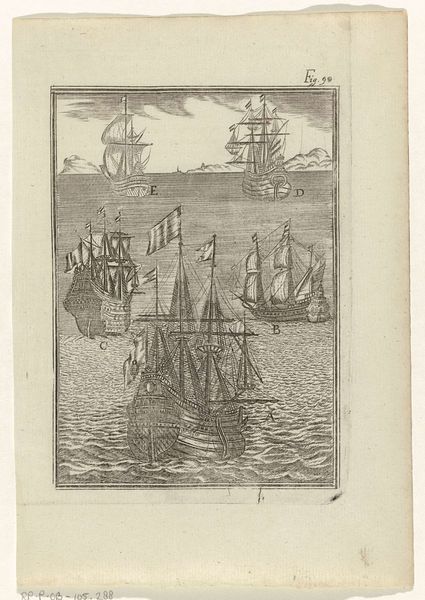
Het schip dreigt bij Oranje-eiland in het ijs vast te raken, 1596 1615 - 1617
0:00
0:00
print, engraving
#
narrative-art
#
dutch-golden-age
# print
#
landscape
#
figuration
#
line
#
history-painting
#
engraving
#
realism
Dimensions: height 137 mm, width 173 mm
Copyright: Rijks Museum: Open Domain
Editor: We're looking at "Het schip dreigt bij Oranje-eiland in het ijs vast te raken, 1596", or "The ship threatens to get stuck in the ice near Orange Island, 1596," an engraving created sometime between 1615 and 1617 by an anonymous artist. It's striking how the sharp, delicate lines create a palpable sense of danger and the sheer power of nature. What catches your eye? Curator: The composition, with its emphasis on line and form, immediately draws attention to the precariousness of the situation. The artist uses the stark contrast between the ship, rigidly vertical, and the fractured horizontal planes of ice to create visual tension. Editor: It does feel like a standoff, almost. How does the artist use technique to reinforce that idea? Curator: Consider the line work. Notice how it is precise and controlled in rendering the ship's structure, suggesting order and human ingenuity, yet becomes more frantic and chaotic when depicting the ice, hinting at the unpredictable forces of nature. Semiotically, the ship symbolizes man’s ambition, and the ice becomes a signifier for nature's resistance. Editor: So, it’s almost a visual argument. Is there a deliberate strategy in how the artist directs our gaze? Curator: Absolutely. The convergence of lines towards the center, where the ship is most threatened, acts as a focal point, creating a powerful visual narrative. The artist also employs a subtle balance, placing figures strategically to lead the viewer’s eye across the treacherous landscape. Editor: It's fascinating how much narrative and tension can be created with such simple lines. It really shifts my understanding of how "realistic" the piece truly is. Curator: Indeed. By meticulously arranging forms and manipulating line quality, the artist creates not just a representation, but a complex, multifaceted visual argument on human ambition against nature’s raw power. The intrinsic elements elevate the artwork beyond a simple historical depiction. Editor: This close look at form and composition gives me so much to think about. Thanks for sharing that unique perspective.
Comments
No comments
Be the first to comment and join the conversation on the ultimate creative platform.
